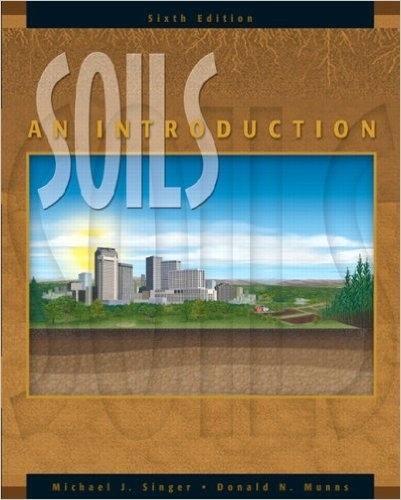Many states have a designated state bird, flower, fossil, mineral, etc. In California, the state bird is the California Valley Quail, the state flower is the Golden Poppy, the state fossil is the Sabertoothed Cat, and the state mineral is Native Gold. The state rock is Serpentine which contains chrysolite asbestos which is a carcinogen. It's a beautiful rock, though.
The state soil is the San Joaquin series. The series concept is that a given soil has certain properties like pH, depth, color, texture, etc. that distinguishes it from other “soils” or series. So wherever this soil is found it is given the same name. San Joaquin series is a soil that is found primarily along the foothills of the Sierras in the Central Valley. The name comes from where it is first described, in this case, San Joaquin, but it is found in other places. Yolo series is named after a soil on the campus at UC Davis in Yolo county, but it is also found in San Diego county, and in other states.
A description of the state soil can be found at the link below, as well as the state soils in other states:
http://www.soils4teachers.org/files/s4t/k12outreach/ca-state-soil-booklet.pdf
http://www.soils4teachers.org/state-soils
Soils can be highly variable depending on the context in which they are found. Going to flat old Kansas which is actually flatter than a pancake (http://www.usu.edu/geo/geomorph/kansas.html), the variability from spot to spot across miles can be minimal. But going to a place like Ventura, Santa Barbara, San Luis Obispo Counties of the Sierra foothills, you can't step on the same soil twice. That's because of the terrain and landforms. Where there is natural erosion (yes, it doesn't take humans to cause erosion) or accelerated erosion (this is where humans have often changed the landscape with roads, houses, removing ground cover) soil gets moved around and deposited in different positions and over time forms different soils with different properties. On large tracts of land that have not been altered much, such as avocado orchards, the naturally formed soils can be seen. In a housing tract where soil has been moved around to level and compact housing pads, it is often hard to find a natural soil because it is so highly disturbed. The soil can have been moved from one end of a 100 acres tract to the other with big equipment. It's all one big homogenous mix down to several feet at times depending on the slope.
In many cases, it is still possible to see the natural soils and knowing their series classification, it's possible to learn some of the properties and some of the problems that will be encountered when working with them. Knowing the pH prior to working it means that it could be adjusted before planting. It's a whole lot easier to adjust before planting than when the plants are in the ground.
You can see the soils in your area by going to the USDA-NRCS (Natural Resources Conservation Service) website - https://websoilsurvey.sc.egov.usda.gov/App/HomePage.htm - and typing in the area code to find the soil at a given site. It probably isn't the state soil series, but it's your soil series.
For a great text on understanding soils, check out Soils: An Introduction by Michael Singer and Don Munns.
